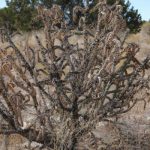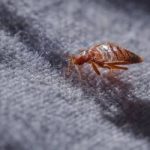How to Handle Houseplant Pests
Houseplants and succulents can be a beautiful accent to your New Mexico home décor. They act as air purifiers and replenish the air with oxygen. Studies indicate interaction with plants can improve your mood. But, this new green addition may include the addition of houseplant pests. Some bugs can be damaging to your plant and may even kill it. By being proactive in preventing pests and treating an infestation early, your plants will thrive for years to come.
Common Houseplant Pests
- Spider Mites – Spider mites are so tiny they are hard to spot. They feed on leaves and green areas of your plants. Spider mite damage shows up as small brown spots on leaves.
- Aphids – Aphids are small black, green, white, or pink oval-shaped bugs. Aphids feed on the carbohydrate-rich sap from your plants. They can transmit viruses that can weaken and kill your plants.
- Mealybugs – Not to be confused with aphids, mealybugs are very similar. Like aphids, mealybugs feed on plant sap. They have white wooly exteriors that are caused by waxy secretions. They can also live in the plant soil.
- Whiteflies – Like a mealybug, whiteflies suck the nutrients out of your plant and can cause the browning of the leaves. Whiteflies have wings and small triangular-shaped bodies. They leave a sticky residue that comes from their mouths while feeding, which is sweet and can attract ants.
- Fungus Gnats – These pests make their home in the plant soil. They look a lot like fruit flies and if given the opportunity they will travel from one plant to another. Fungus Gnat larvae feed on fungus in the plant soil, which most commonly occurs while the soil is moist and/or in a humid environment.
- Scales – To the untrained eye, you wouldn’t identify scales as a bug because they don’t move. Some species are covered in armor-like plating, which is how they came to be named. Scales are most likely found in groups on the plant stems.
How Do I Stop Houseplant Pests?
- Rinse Off Leaves – Some bugs, such as mealybugs, can be knocked off by rinsing the plant under a strong spray of water like in a shower or a hose. Also, you could wipe the plant off with a damp cloth.
- Prevent Pests From the Start – Before buying a new plant for your home inspect it for pests or any damaged leaves. Inspect a new plant before bringing it into your home if you are unable to see it before buying.
- Quarantine Affected Plants – If you have a plant that is infested, it is best to isolate this plant right away. This lessens the chance the bugs will spread to your healthy plants. Scales spread extremely easily from one plant to another so it is especially important to isolate these plants right away.
- Treat the Leaves with Topical Treatments – You can use a cotton ball soaked in rubbing alcohol and wipe down the entire plant. This rarely is a one-time application but once you think the pest population is taken care of, rinse the plant with water. You can also use insecticidal soap, but make sure it is labeled for both pest and plant use.
Treating the Soil
- Provide good drainage and don’t overwater.
- Change the soil often and wash the pots.
- Remove excess soil from roots before repotting.
- Use pasteurized potting mix. It has been heat-treated which reduces algae and other microorganisms that pests feed on.
- Invest in a waterer that waters from the bottom. This keeps the top inch or two of the soil dry as this is where fungus gnats like to live.
Pest Control and Prevention
Like with any pest infestation, the first step is controlling it. At New Mexico Pest Control, we have over 70 years of experience in pest control and elimination. For a free estimate, call today!





